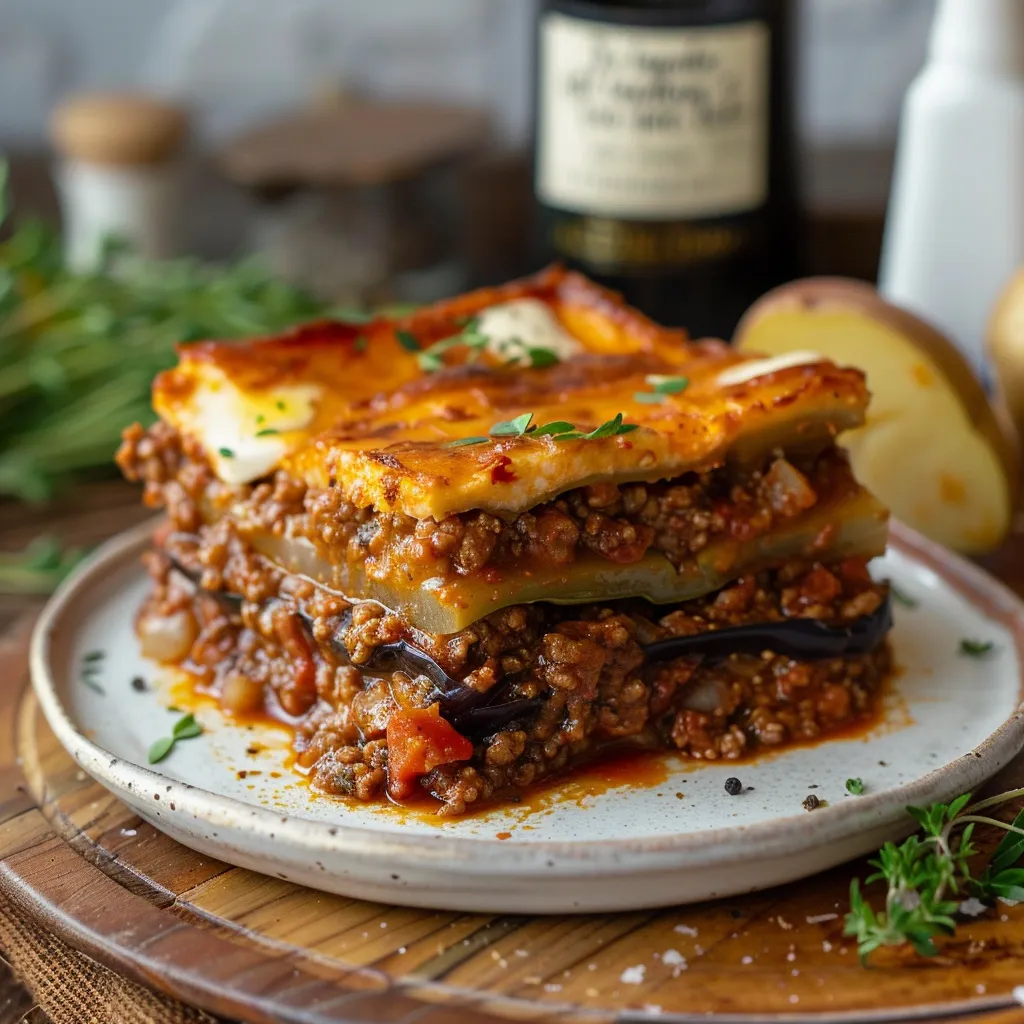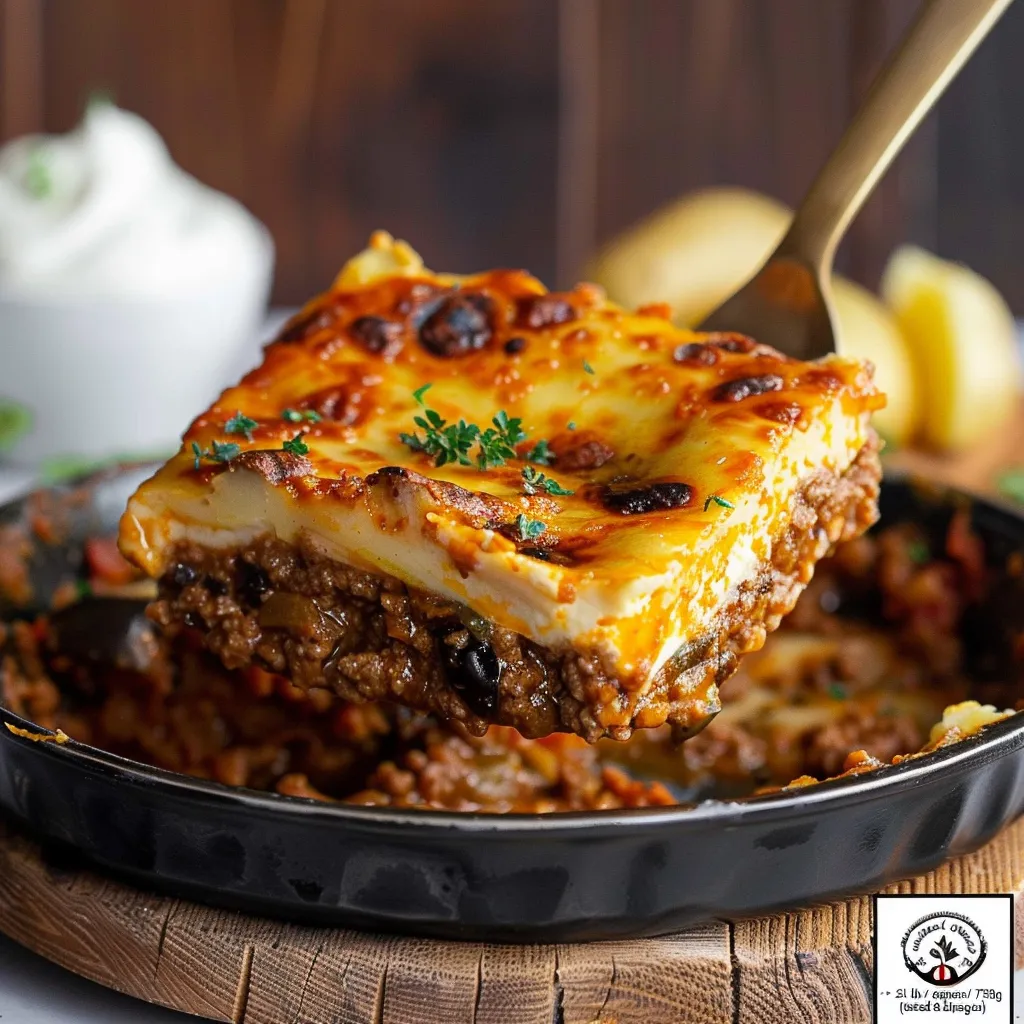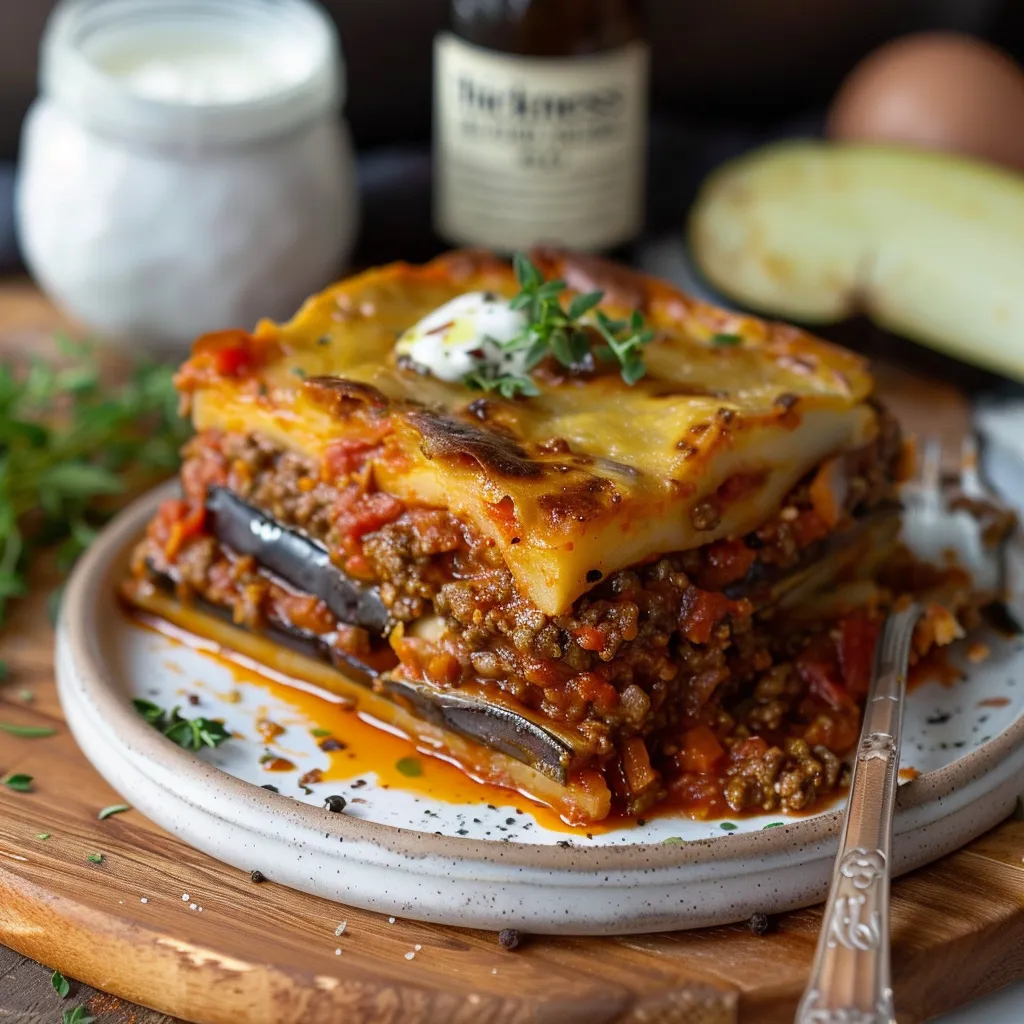 Pin to Favorites
Pin to Favorites
Creating the perfect Moussaka is like orchestrating a symphony where each layer plays its own vital role. This classic Greek dish has been a part of my cooking journey since I first tasted it in a small taverna overlooking the Mediterranean. Through countless attempts and refinements, I've discovered that the secret lies not just in the ingredients, but in the careful preparation of each component. The rich meat sauce, tender vegetables, and velvety béchamel come together to create something truly extraordinary.
Last month, I served this at a dinner party, and my Greek friend's grandmother asked for the recipe - a moment I'll treasure forever. The key was taking time with each step, especially salting the eggplant and allowing the meat sauce to develop its deep flavors.
Essential Ingredients
- Ground Beef: Choose 80/20 for the perfect balance of flavor and texture.
- Eggplant: Look for firm, glossy ones with minimal seeds.
- Red Wine: Use a full-bodied wine that will hold up to the robust flavors.
- Fresh Herbs: Thyme and parsley add brightness and depth.
- Cinnamon: Just a touch transforms the meat sauce.
- Pecorino Cheese: Adds sharp, salty notes that complement the creamy béchamel.
- Whole Milk: Essential for a rich, smooth béchamel.
- Nutmeg: Freshly grated makes a noticeable difference in the béchamel.
 Pin to Favorites
Pin to Favorites
Detailed Cooking Instructions
- Meat Sauce Development
- Heat olive oil in a large pot over medium heat. Sauté finely diced onions until soft and translucent. Add minced garlic, cooking until fragrant. Brown meat thoroughly, breaking into small pieces. Stir in tomato paste and cook until darkened. Add wine, letting it reduce by half. Mix in stock, passata, and herbs. Simmer gently for 45-60 minutes until thickened. Season progressively throughout cooking.
- Vegetable Preparation
- Slice eggplant into 1/4-inch rounds. Salt generously and let drain for 30 minutes. Cut potatoes and zucchini into similar thickness. Pat all vegetables completely dry. Heat oil in large skillet until shimmering. Fry each vegetable until golden brown. Drain on wire racks, not paper towels. Season each batch while still hot.
- Béchamel Creation
- Melt butter in heavy-bottomed saucepan. Whisk in flour until nutty and golden. Gradually add warm milk, whisking constantly. Cook until thick enough to coat the back of a spoon. Season with salt, pepper, and nutmeg. Remove from heat before adding egg yolks. Stir in cheese until melted.
- Assembly Process
- Grease baking dish thoroughly. Layer potatoes in overlapping pattern. Add zucchini layer perpendicular to potatoes. Place first eggplant layer. Spread meat sauce evenly. Add final eggplant layer. Top with béchamel and extra cheese.
Living in Greece taught me that perfect Moussaka requires patience - rushing any step compromises the final result.
Temperature Management
Keep the meat sauce at a gentle simmer to develop flavor without reducing too quickly. When frying vegetables, maintain consistent oil temperature for even browning.
Make-Ahead Strategy
Prepare components separately up to two days ahead. Assemble and bake just before serving, or assemble fully and refrigerate overnight.
Texture Balance
Each layer should maintain its integrity while contributing to the whole. The vegetables should be tender but not mushy, the meat sauce rich but not wet.
This Moussaka recipe represents years of learning and refinement. It's a testament to the beauty of traditional Greek cooking, where simple ingredients transform into something magnificent through careful technique and patience. The layered flavors and textures create a dish that's both comforting and sophisticated.
 Pin to Favorites
Pin to Favorites
Frequently Asked Questions
- → Can I prepare moussaka ahead of time?
- Yes, you can prep the beef layer ahead and store it overnight, or assemble the entire dish and refrigerate before baking.
- → Can I bake the vegetables instead of frying?
- Yes, you can bake the eggplant, zucchini, and potatoes at 200C/390F with olive oil until tender and lightly golden.
- → How long can I store leftover moussaka?
- It keeps in the fridge for 3-4 days or can be frozen for up to a month.
- → What type of cheese can I use?
- Traditional Kefalotiri cheese, Pecorino Romano, or Parmesan all work well in this recipe.
- → Why do you salt the eggplant?
- Salting helps draw out moisture and reduces any potential bitterness in the eggplant.
